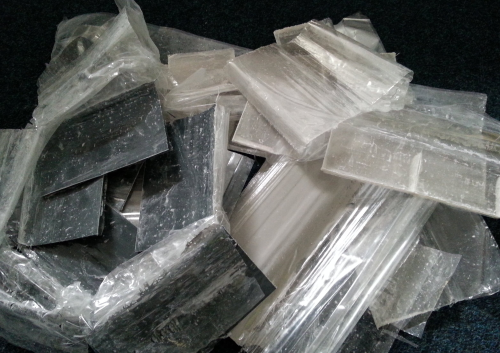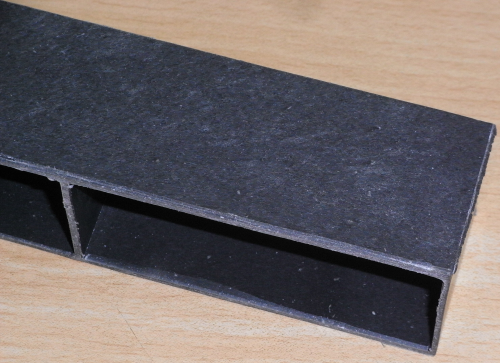

The world is going through a low carbon revolution and the potential for composites to reduce greenhouse gas emissions is clear. But the difficulty of recycling glass fibre reinforced plastic (GRP) is a stumbling block particularly in construction and automotive where the pressure to recycle is high.
The European Composites Industry Association (EuCIA) states that GRP is “recyclable and compliant with EU legislation,” and it is (see EuCIA issues position paper on recycling of glass reinforced thermoset composites). But at present facilities exist only in Germany to recycle, which for companies in UK, for example, is prohibitively expensive and not environmentally friendly due to the effect of transport, leaving the option only to landfill.
To what extent is GRP economically recyclable, and therefore actually being recycled? How much would it affect markets for GRP if there were fully functioning, economically sustainable, geographically widespread recycling supply chains?
Several articles in Reinforced Plastics have advised us of the development of pyrolysis based carbon fibre recycling processes and these are now commercially available in several places since the launch of Milled Carbon (now ELG Carbon Fibre) in the West Midlands, UK. But the value of carbon fibre is around ten times that of glass, so while commercialising these processes has not been easy, it has been 'easier' than finding recycling routes for GRP, despite the much smaller volumes (76,000 tonnes carbon fibre reinforced plastic compared to about 1 million tonnes GRP parts produced in Europe in 2012, according to AVK's 2012 market report).
|
Incineration of GRP is not practical since about 50-70% of the material is mineral and would be left as ash, which still needs to be landfilled. For co-processing in cement kilns, composite parts are size-reduced and mixed with other waste to feed into the kilns. GRP typically contains E-glass, which is usually alumino-borosilicate, along with an organic resin and often calcium carbonate filler. When fed into a cement kiln the organic resin burns providing energy (about 12 MJ/kg of waste) and the mineral constituents provide feedstock for the cement clinker. The clinker is ground to form cement. Any calcium carbonate calcines (releasing carbon dioxide) to calcium oxide, the primary component of Portland cement. Alumina and silica also have cementitious properties in an alkaline environment and are typically present in Portland cement at about 25%, and in much higher proportions in cement alternatives from fly-ash and slag. Boron, which is found in most E-glass, can cause a reduction in early strength during the setting of cement, but as long as proportions are kept low it is not considered a problem (ref: Pickering, Benson, Recovery of material and energy from thermosetting plastics, Proceedings, ECCM6 – Recycling concepts and procedures, 1993. |
The recycling process supported by EuCIA, and available in Germany, involves the addition of GRP waste to cement kilns. This gains value from all parts of the composite and is commercially active in Germany through the route known as Compocycle, operated by Zajons and feeding Holcim’s cement kilns. However there is still a significant gate fee for the process. In Germany regulations leave no option to landfill so the volumes of GRP waste are sufficient to justify such a process. Composite manufacturers such as Fiberline in Denmark have supported that process, being close enough to take advantage of it. But this route reduces the value of the material to that of calcium carbonate and at present is not economic compared to landfill where landfill is an option.
Mechanical grinding
Recycling of GRP by mechanical grinding has been happening for several decades. Back in the 1970s the late Wolfgang Unger was developing his proprietary Seawolf technology in Florida, US, to grind fibreglass scrap and use it for replacing rotten boat transoms or incorporate it using spray-up equipment for making bathtubs and other products.
Unger’s company is now called Eco-Wolf and is managed by his daughter SabineCorinna Unger. Eco-Wolf has recently (2011) partnered with Global Fiberglass Solutions which is seeking to build and manage facilities to collect and recycle fibreglass across the US, having developed applications such as railroad ties (railway sleepers).
ERCOM Composite Recycling GmbH was established in Germany in 1990 to recycle automotive production and post-use waste by shredding and grinding graded parts into powder, to be used in new sheet moulding compound (SMC) in proportions up to 20% (ref: George Marsh, Facing up to the recycling challenge, Reinforced Plastics, Volume 45, Issue 6, June 2001, pages 22-26). ERCOM terminated in 2004. This approach of grinding GRP to fine powder for use as filler is well established in several industries, but as with the cement kiln route, it reduces the value of the material to that of calcium carbonate, which can be purchased at very low cost (around £200/tonne). In addition, it requires a significant amount of energy input to grind the material finely. Thus apart from some in-house recycling (see below), attempts to commercialise this as a recycling route have failed.
In the UK two roof light manufacturers now recycle some of their own waste by grinding. Filon Products has invested in machinery to grind their in-house GRP waste and incorporates it into a range of products including roofing sheet, valley gutters and flat sheet for signage. They are now investigating using the recyclate in moulding compounds.
Hambleside Danelaw (HD) is similarly grinding waste, and offers a take-back scheme for products at end of life. They have been involved in trials in numerous products over the last 10 years or so. Initially they worked with Dundee University using the recyclate in foamed concrete which had some advantages, but the reduction in slump (effectively increased viscosity) meant that it did not flow easily into moulds. In 2007-2008 in the UK several trials were undertaken through the BeAware project (Built Environment Action on Waste Awareness and Resource Efficiency) to incorporate GRP waste into precast concrete and rubber products. Improvements in properties were demonstrated, but again results were not commercialised.
However HD has found that there is more value in separating off the glass fibres from the resin powder to re-use as reinforcement. They have trialled this in new glass fibre mats for valley gutters and also in thermoplastic composites. In addition to glass fibre reinforced polyester products, they manufacture building products from injection moulded polypropylene (PP) and other polymers. Adding the short glass fibres to the PP increases strength and stiffness as well as reducing the PP content and therefore the cost of the injection moulded products. They are exploring ways to widen applications and so reach a place where they can take waste from other companies to process and sell back into new products.
| As a responsible business we feel that we have to look at a circular economy and take responsibility for the products we manufacture. We can’t keep throwing things into holes in the ground, because a) there aren’t enough holes, and b) the cost of landfill is increasing. |
| Ray Khan, Director of Quality and Environmental Standards, Hambleside Danelaw |
Ray Khan, Director of Quality and Environmental Standards at HD, says: “As a responsible business we feel that we have to look at a circular economy and take responsibility for the products we manufacture. We can’t keep throwing things into holes in the ground, because a) there aren’t enough holes, and b) the cost of landfill is increasing.”
Similar work has been done by Mixt Composites Recyclables (M-C-R) in France, a subsidiary of Plastic Omnium Auto Exterieur. M-C-R manufactures moulding compounds and takes back process waste from its clients which is ground and re-integrated into new compounds for automotive parts. The recyclate is finely ground to about 50 microns to replace filler.
Sébastien Masson, R&D Project Manager at M-C-R, explains that the added value is in the environmental aspect, or in respecting incentives to recycle/increase recycled content.
M-C-R also extracts longer fibres from less finely ground recyclate and sells this as a substitute for PP fibres in cement floor screeds, where the fibres limit cracking during the early setting of the cement. This has been validated in trials by CERIB (Centre d’Etudes et de Recherches de l’Industrie du Béton). They have also done some studies compounding the fibres in thermoplastics, though this is not yet commercially active.
In Belgium, Reprocover manufactures manhole covers, valve chambers and other construction products using ground thermoset industrial waste including GRP and clean waste fibres from nearby glass fibre reinforcement manufacturer, 3B-the fibreglass company. They have recently developed a bi-block railway sleeper with excellent vibration absorbing qualities which is currently undergoing detailed testing for approval to replace timber railway sleepers. Timber railway sleepers are likely to be phased out in Europe due to legislation which is expected to come into force in 2018 relating to the carcinogen effect of the creosote used to treat them, so railway companies are actively seeking alternatives. This could be a useful growth market application for waste GRP. ♦
Part 2 of this article will be published next month.
Further information
Stella Job is a Knowledge Exchange Expert for the Materials Knowledge Transfer Network (KTN). The Materials KTN is funded by UK Government’s Technology Strategy Board to support innovation and research in materials science. Contact stella.job@materialsktn.net. To keep in touch with Materials KTN activities in this area, join the Composite End of Life subgroup on _connect.
This article was published in the September/October 2013 issue of Reinforced Plastics magazine.
The digital edition of Reinforced Plastics is distributed free of charge to readers who meet our qualifying criteria. You can apply to receive your free copy by completing the registration form.





